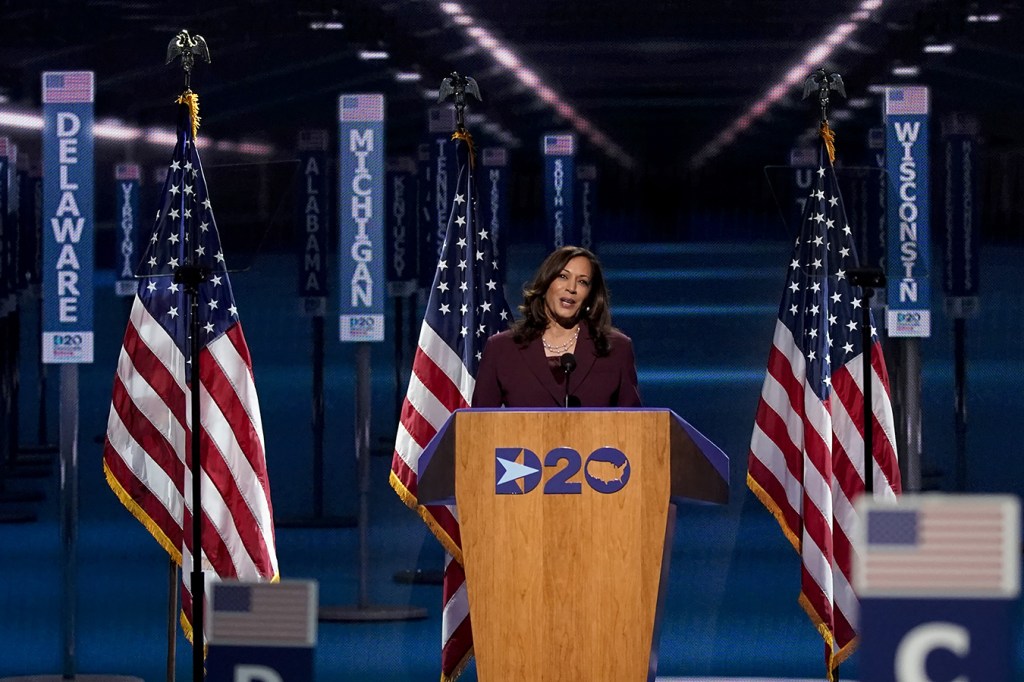The third night of the Democratic National Convention was all about one thing: Sen. Kamala Harris of California becoming the first Black and Indian American woman to accept a major political party’s vice presidential nomination.
But key Democratic criticisms — many rooted in health care issues and the COVID-19 pandemic — were repeated throughout the evening.
Hillary Clinton took an early swipe at President Donald Trump’s coronavirus response, describing how he has fallen short despite coming in “with so much set up for him,” such as “plans for managing crises — including a pandemic.”
House Speaker Nancy Pelosi reupped another criticism of Trump and his fellow Republicans: “Instead of crushing the virus, they’re trying to crush the Affordable Care Act and its preexisting conditions benefit,” she said.
During her acceptance speech, Harris issued her harsh rebuke: “Donald Trump’s failure of leadership has cost lives and livelihoods.”
Our partners at PolitiFact did a thorough rundown on many of the evening’s claims. Here’s one of our favorites:
“And while this virus touches us all, we’ve got to be honest: It is not an equal opportunity offender. Black, Latino and Indigenous people are suffering and dying disproportionately.” — Democratic vice presidential nominee Kamala Harris
This is true, based on available data.
The Centers for Disease Control and Prevention has broken down some COVID data by race and ethnicity; however, not all cases reported include demographic information. Of the cases that do, Hispanic/Latino people have represented 31% of cases and 16.9% of deaths. Black people account for 19.8% of cases and 22.3% of deaths. And American Indians and Alaska Natives make up 1.2% of cases and 0.8% of deaths.
This data isn’t balanced against what proportion of the population fits into each group. Other sources have attempted to provide such context.
The COVID Racial Data Tracker has asked every state to report complete data by race and ethnicity. These data sets are then analyzed against Census Bureau demographic statistics. According to the tracker’s website, Black people nationwide are dying from COVID-19 at 2.4 times the rate of white people. In May, NPR analyzed data from the COVID Racial Data Tracker and reported that in 42 states and Washington, D.C., Hispanics and Latinos make up a greater share of COVID-19 confirmed cases than their share of the population. White deaths from COVID-19 were found to be lower than their share of the population in 37 states and Washington, D.C.
In addition, The New York Times has analyzed CDC data by race and ethnicity. According to its July analysis, the Times found that Latinos and African Americans in the U.S. are three times as likely to become infected with COVID-19 as white people. And Blacks and Latinos are also twice as likely to die from COVID-19 as white people.
The New York Times also analyzed limited data from state and local health agencies on COVID-19’s impact on the Native American community in July. In its analysis, the rate of known cases in eight counties with the largest populations of Native Americans is nearly double the national average. There were also smaller counties with large Native American populations that had high COVID-19 case rates.
— Victoria Knight, Kaiser Health News
This story was produced by Kaiser Health News, an editorially independent program of the Kaiser Family Foundation.
